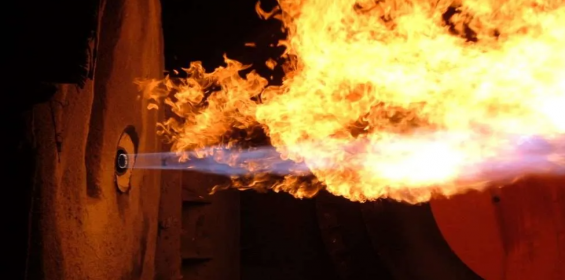Boosting efficiency
Published: 18 July, 2022
Dr Martin Lawrence, Combustion Development Specialist at Air Products, looks at how digitalisation can enhance aluminium recycling to boost efficiency.
Disruptive technologies in the workplace are now presenting us with a wealth of possibilities and stress the importance of working smarter and more efficiently to get better results. The potential is huge and constantly evolving, with a ripple effect across industries who are increasingly seeing the benefits of using data to make more intelligent choices.
New era for remelting aluminium
Aluminium is a vital resource to many industries, including the engineering sector. Due to aluminium’s sustainable and lightweight properties, it can significantly reduce environmental impact. It is also 100% recyclable.
Air Products has been working with the secondary aluminium industry to improve the increasingly popular remelting process and has developed a range of oxygen enhanced combustion technologies with the sole purpose of improving efficiency and reducing environmental impact and carbon footprint. Furthermore, Air Products supports its customers to identify and overcome challenges by using 4.0 technologies, making sure continuous improvement is achieved when it comes to finding sustainable solutions.
As part of this process, we are now seeing a decrease in heavily relying on an operator’s skills and experience to predict when the aluminium has reached tapping temperature. Operator led monitoring, combined with the significant variability that is inherent in the remelting process, can often lead to suboptimal performance and inconsistent results. This, in turn, contributes to longer cycle times, reduced energy efficiency and increased aluminium losses.
By accurately predicting when the aluminium has reached tapping temperature, we can prevent the metal overheating, which saves time and energy, as well as improve yield. Melting performance can also be improved by reducing the number of times the furnace door is opened, resulting in lower energy losses. The introduction of smart technology – such as equipment sensors and associated analytics – makes a significant amount of data available, which can be used to boost efficiency and productivity. This in turn can lead to improved yield and reduced carbon emissions.
Smart technology is increasingly being used in the aluminium industry as it can help to achieve greater efficiencies, while improving safety, productivity and environmental performance Industry 4.0 technology can be used to log key performance and operational parameters over time, creating a ‘digital twin’ virtual representation (or model) of the equipment or melting process to improve efficiency and reduce maintenance time.
This digital twin model uses the data to establish the optimal efficiency of the melting process and calculate when the metal inside the furnace has reached ideal melting and optimal yield conditions. As part of this, real-time closed or open-loop feedback is provided, which will either autonomously shut-down the burner or alert the operators that the metal has reached the required temperature for pouring. As new data continues to feed into the model, machine learning technology also improves its predictions over time.
Digital twin technology
The digital twin model has been successfully tried and tested by Air Products and Cheshire based aluminium producer, Tandom Metallurgical Group. This collaborative 10- month study saw Air Products monitor the impact of using Industry 4.0, sensors and process data to achieve greater efficiencies and energy savings.
The team developed and implemented a digital twin on a tilt rotary furnace (TRF) used by Tandom to remelt aluminium waste materials. The information collected was analysed to establish aluminium oxidation losses over a large number of cycles. Regression analysis showed an exponential relationship between yield loss and metal tapping temperature. The baseline data was compared with data from cycles that were completed using the digital twin, which found hat an accurate model of end-of-melt prediction, combined with timely burner shutdown control provided significant benefits in production, yield and energy savings.
The importance of tapping temperature on aluminium loss was also revealed. For example, tapping liquid aluminium at 900°C (1,652°F) as opposed to 750°C (1,382°F) for a charge material with 80% aluminium content, will lead to an additional yield loss of about three per cent.
The patented Air Products Process Intelligence (APPI) Process Advisor system was used to better understand when the metal inside the furnace is ready to be tapped, thereby reducing tapping temperature and improving aluminium yield. During the over 10-month study, more than 1400 cycles were analysed and compared with base data from over 1,000 cycles, and the overall average tapping temperature was successfully reduced by 44°C. The improvement in yield was noted to vary depending on the materials in the furnace. The average reduction in temperature corresponds to a yield improvement of 0.5%.
As a result of reducing the metal tapping temperature, there was also a dramatic decrease in energy consumption, with an average reduction of 15%. Energy usage goes hand-inhand with carbon dioxide emissions and 15% energy savings is equal to the same percentage reduction in CO2 emissions. The study was carried out as a weighted average for like-for-like materials that were used during both the base data collection period and during the 10-month study; these materials comprise 77% of the materials used during the 10-month study and are therefore an accurate representation of the data.
The study also achieved an average time saving of 5.7%, due to the implementation of the digital twin. Certain materials also showed a reduction in melting time of more than 10%, where the digital twin model dramatically reduced the variability in the results.
As the world continues to evolve from the impact of the pandemic and climate crisis, many solutions remain that were created from a necessity to change in order to deliver clear environmental and business benefits, as the Air Products and Tandom study demonstrates. Remote and digital monitoring will continue to play a central role in many production plants, enabling engineering teams to deliver greater efficiencies, improve productivity and enhance yields – all thanks to better insight, informed by smart technology.
https://twitter.com/AirProductsuki
https://www.linkedin.com/company/air-products/







